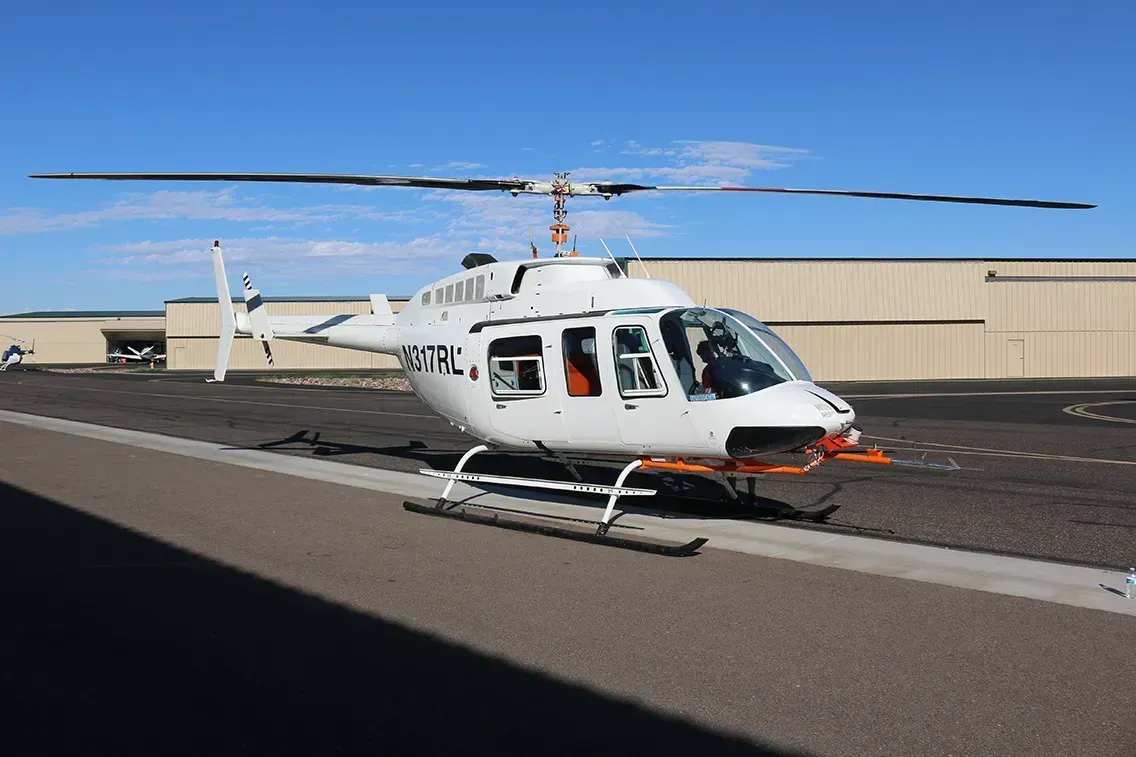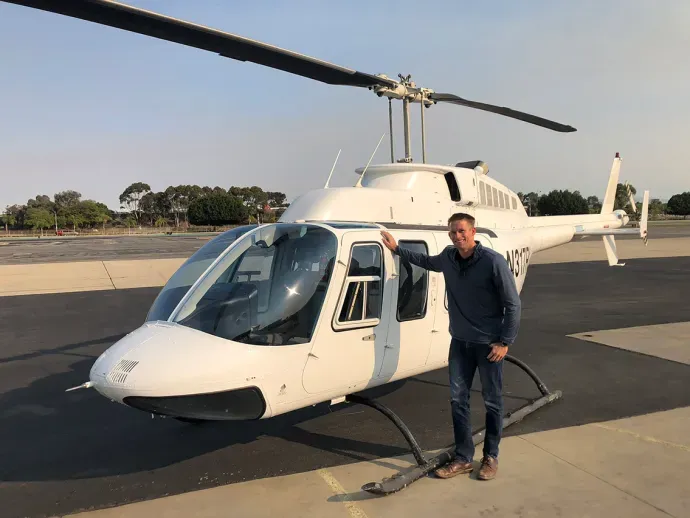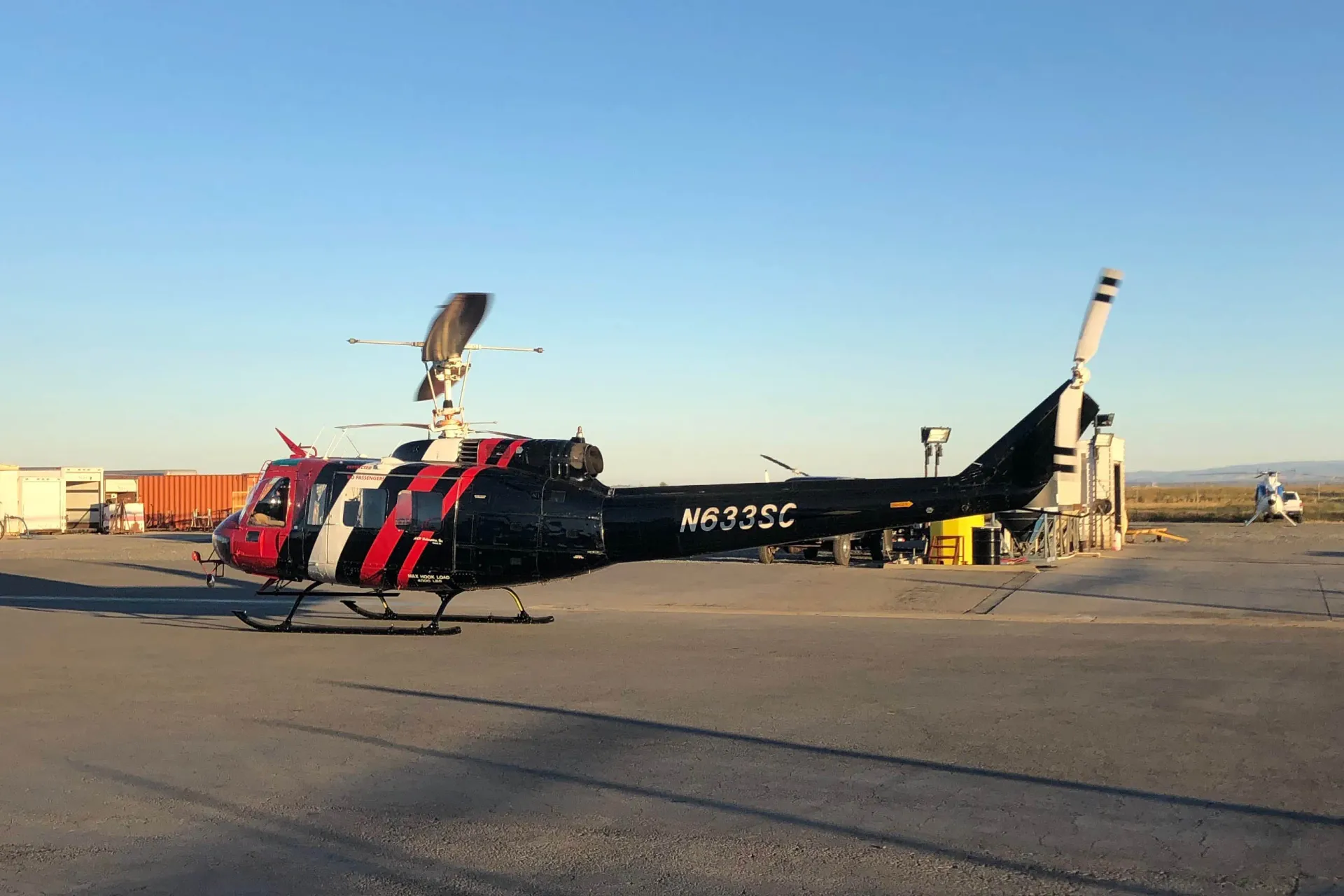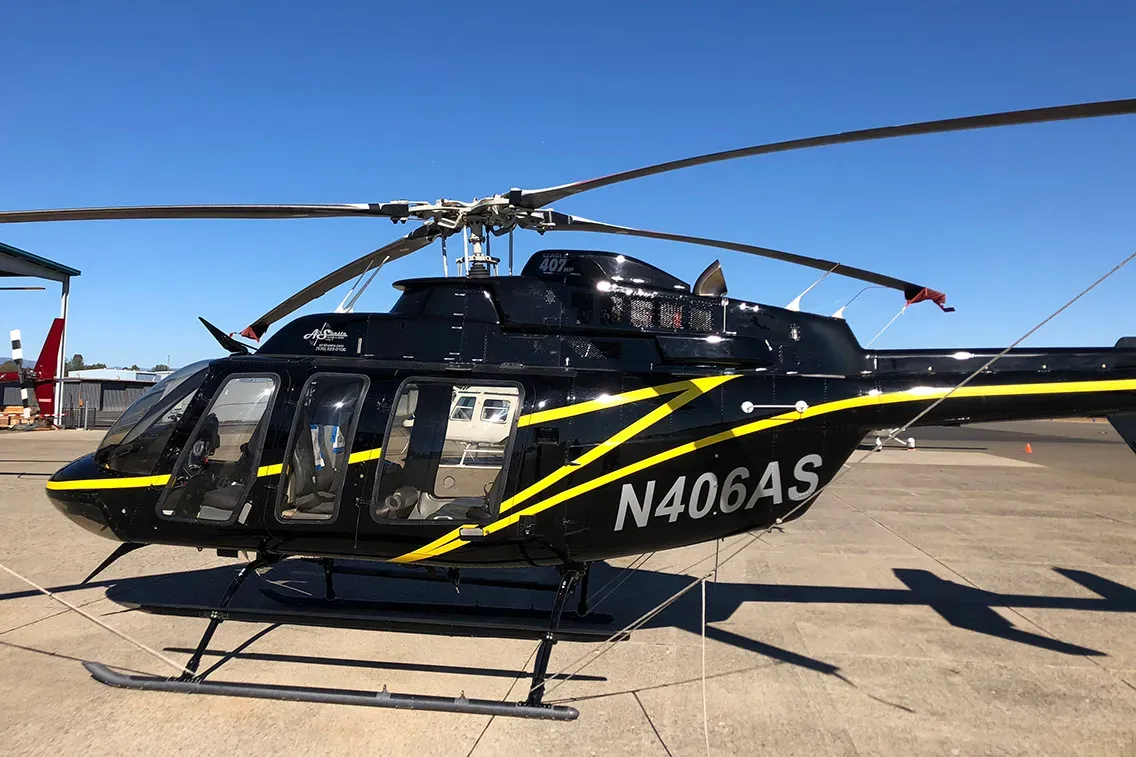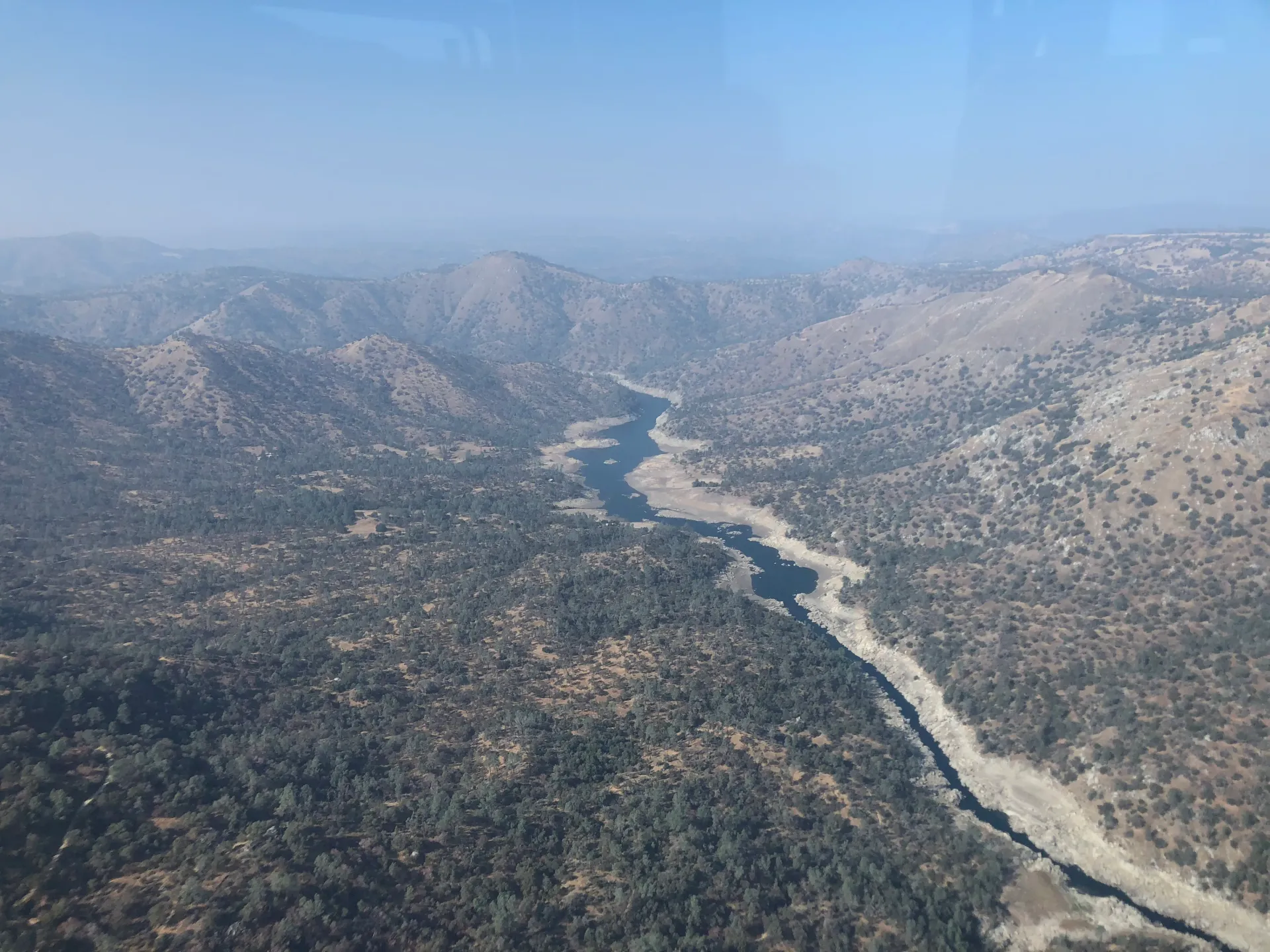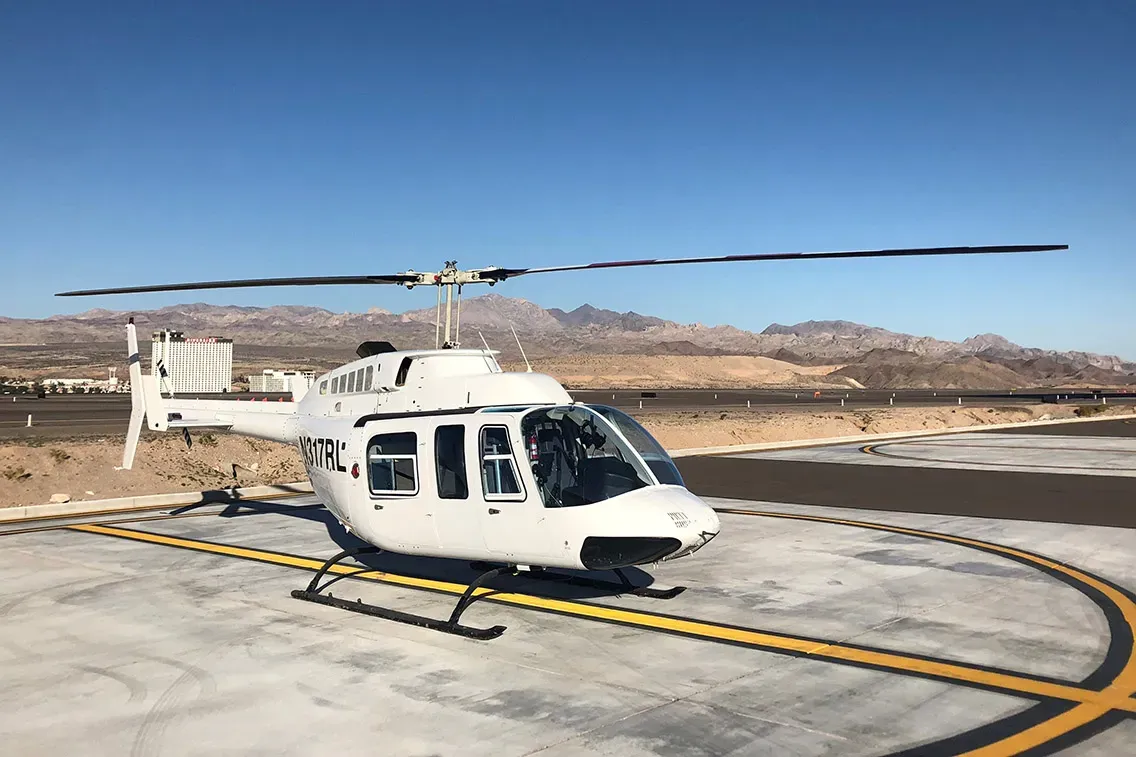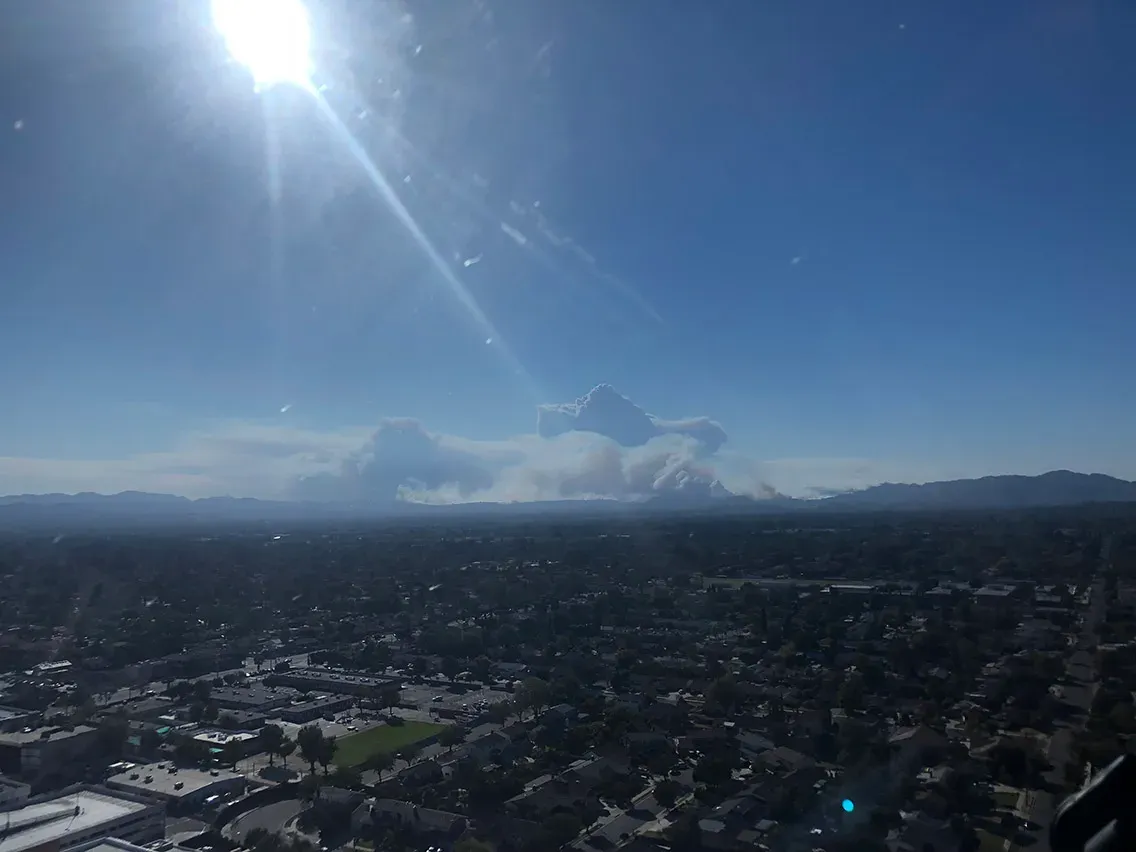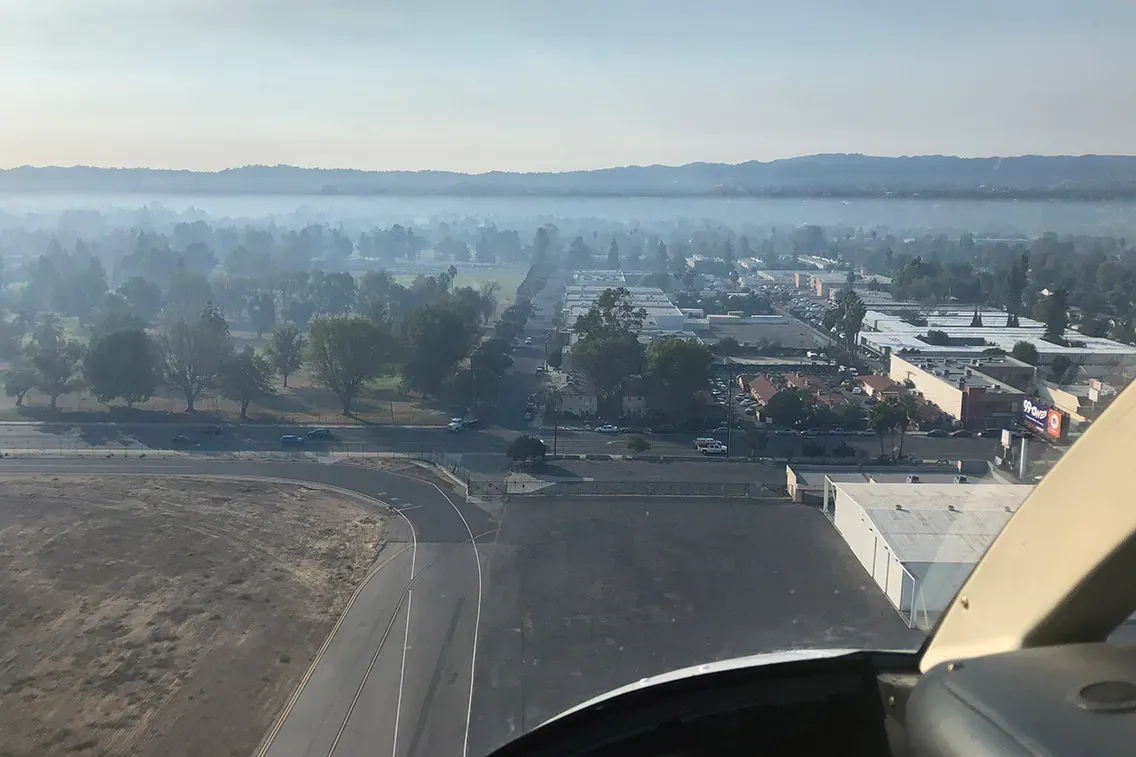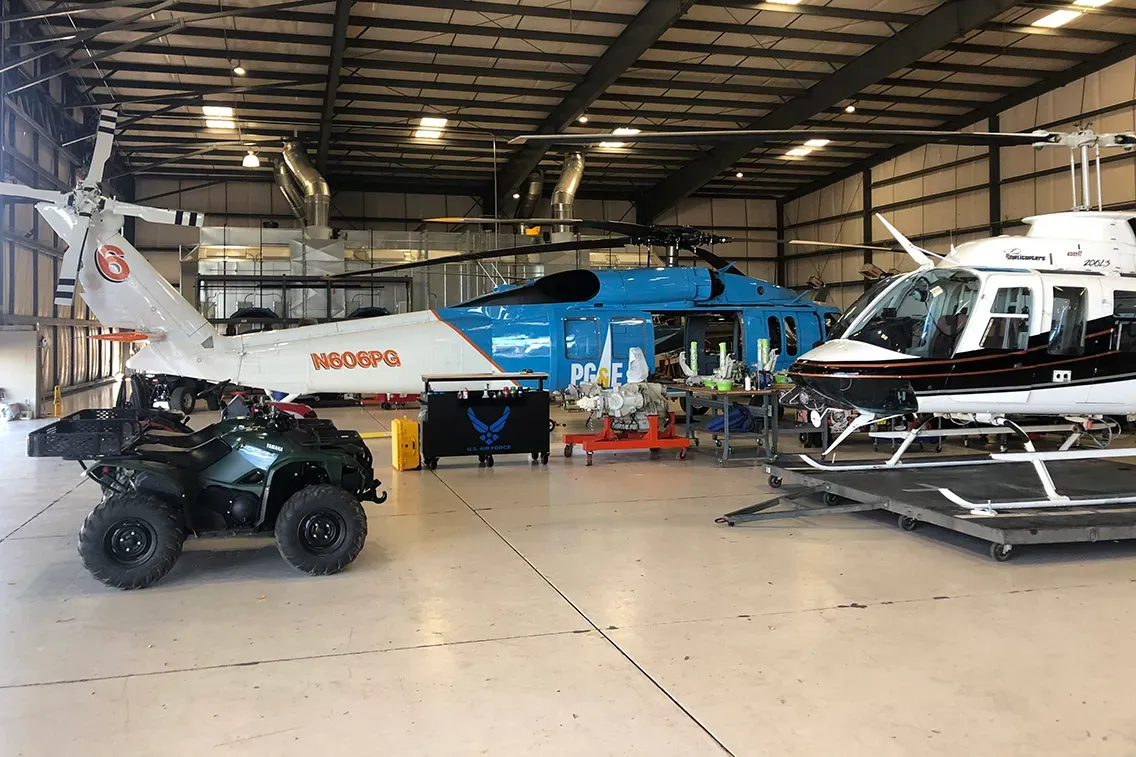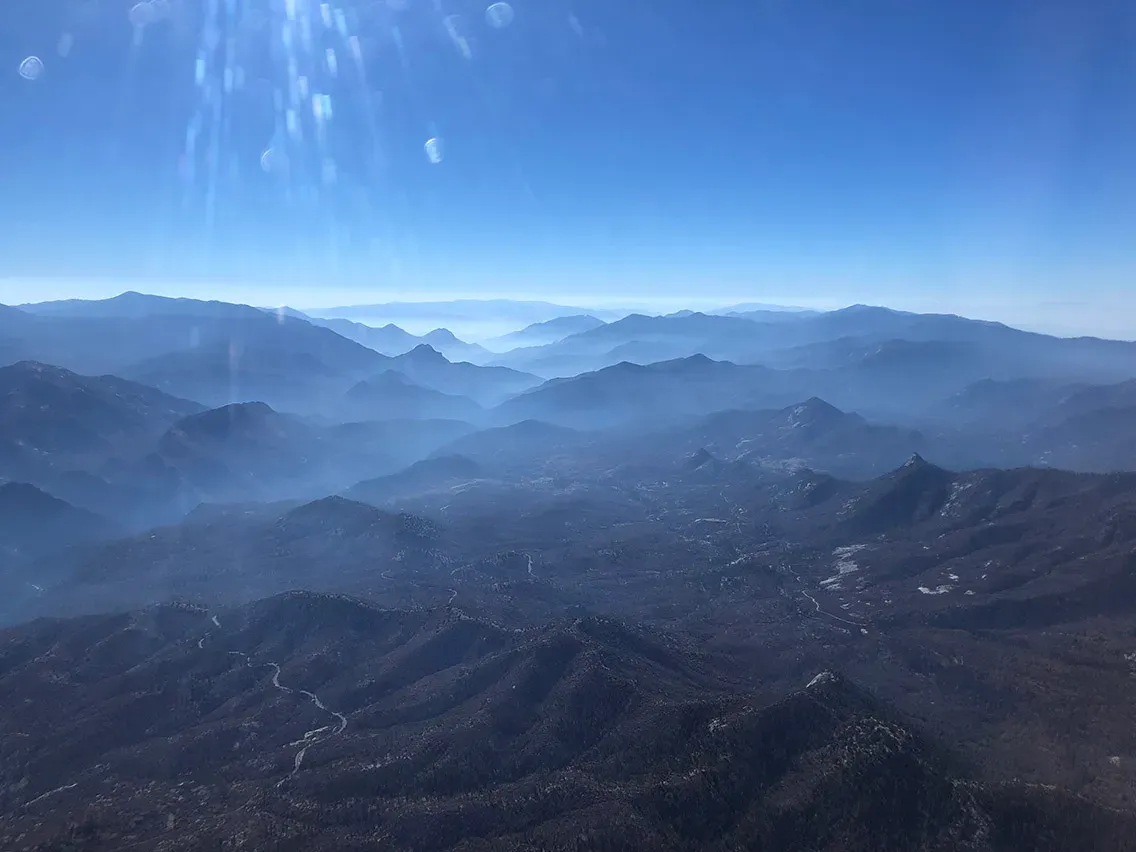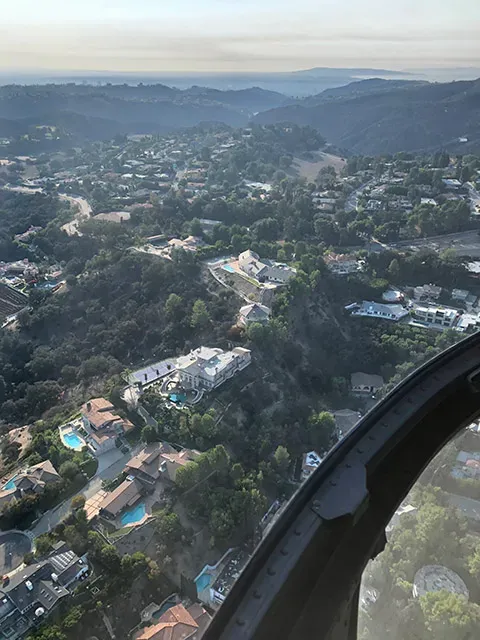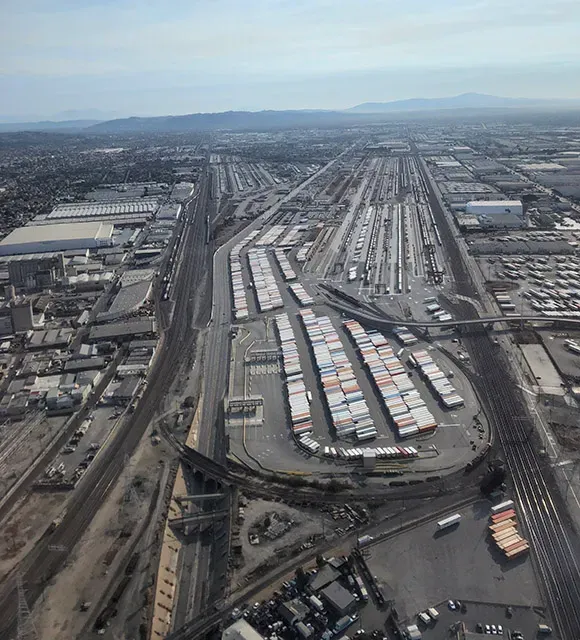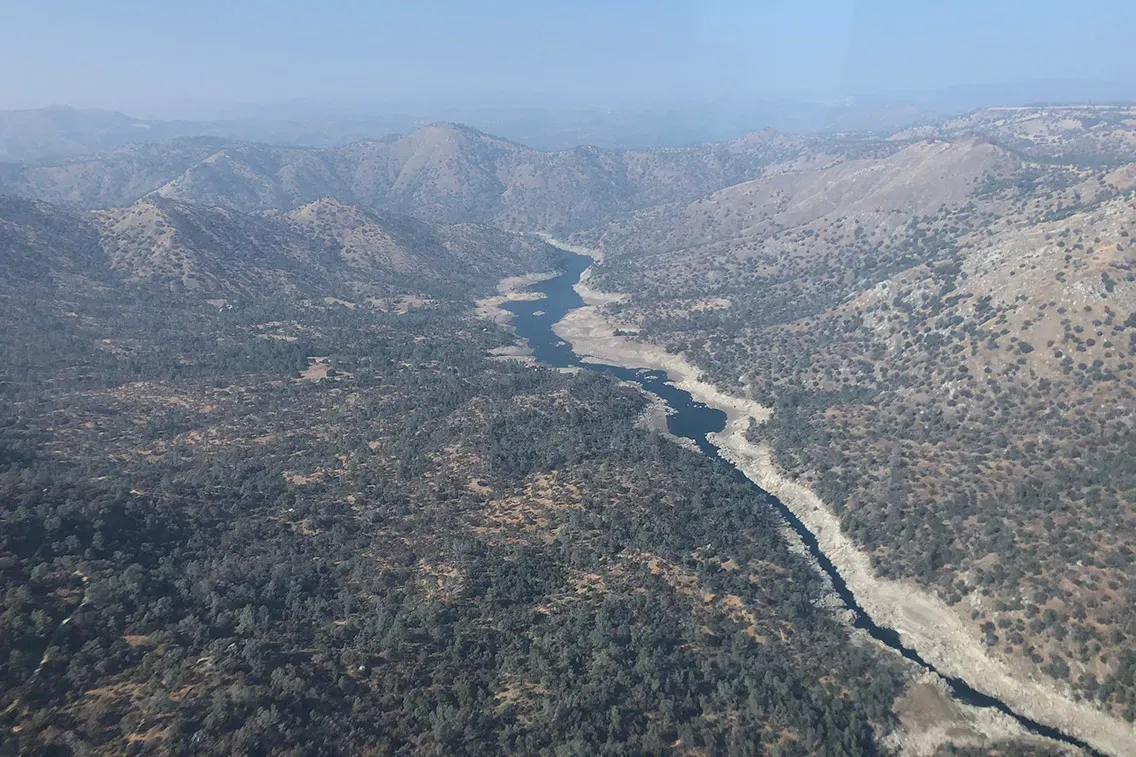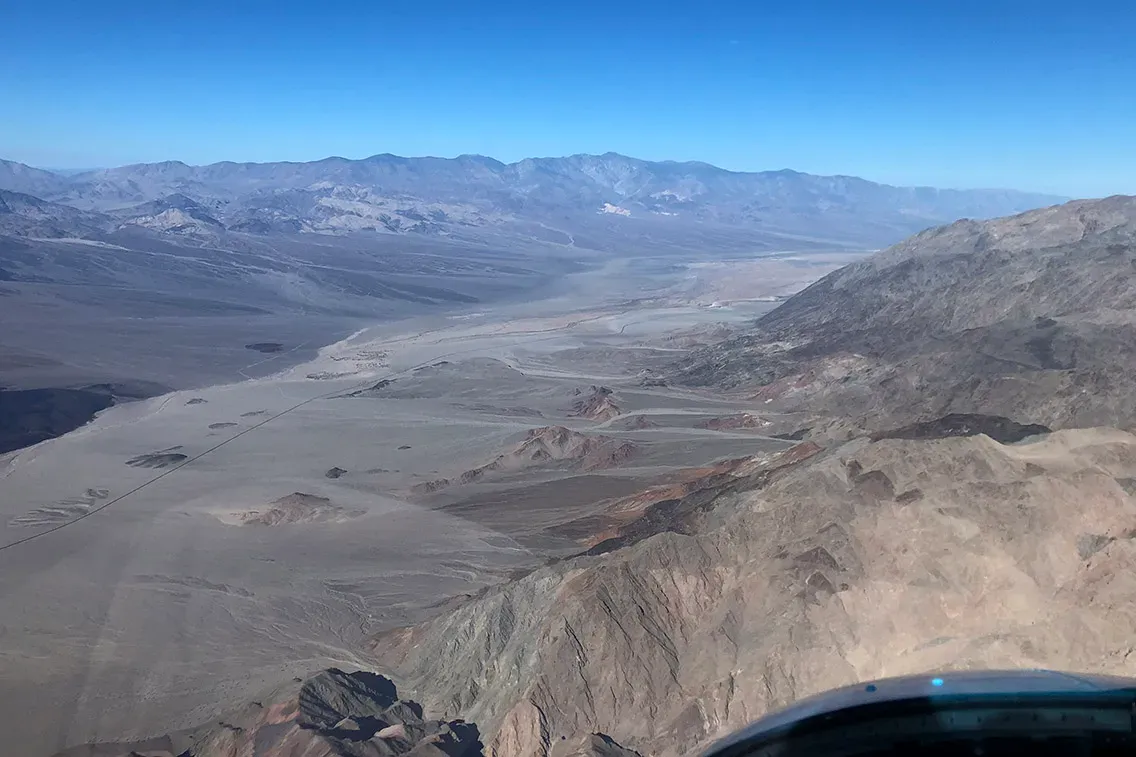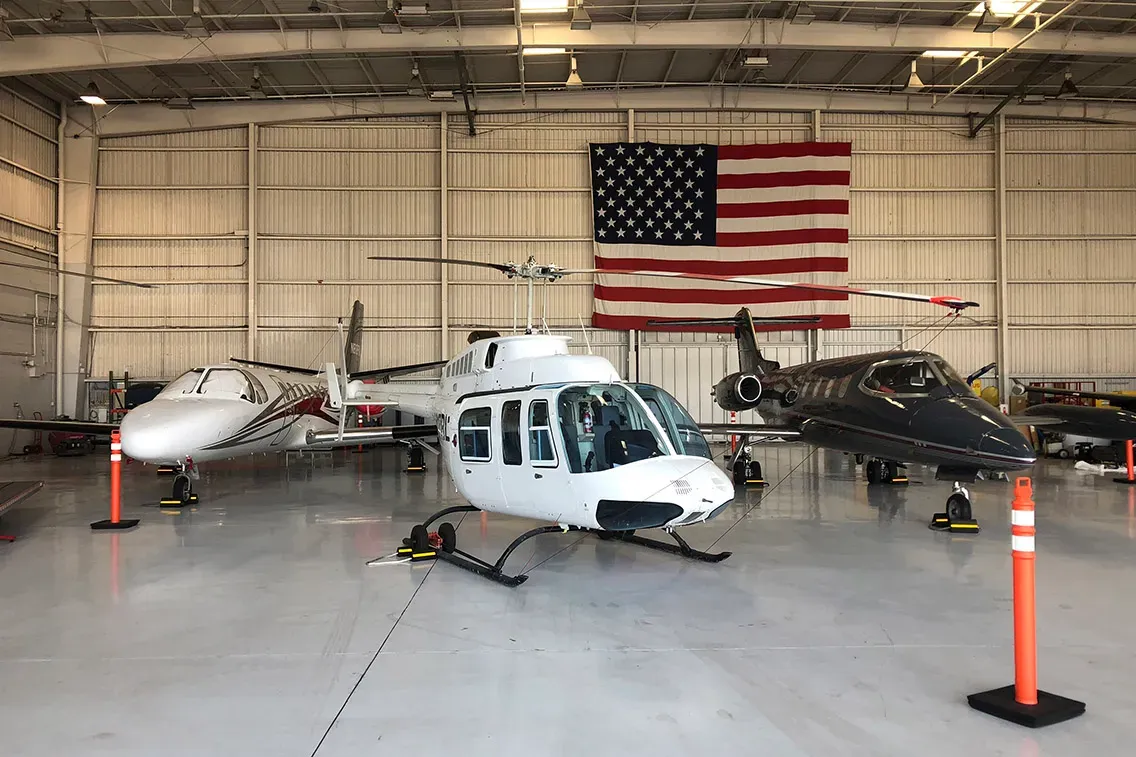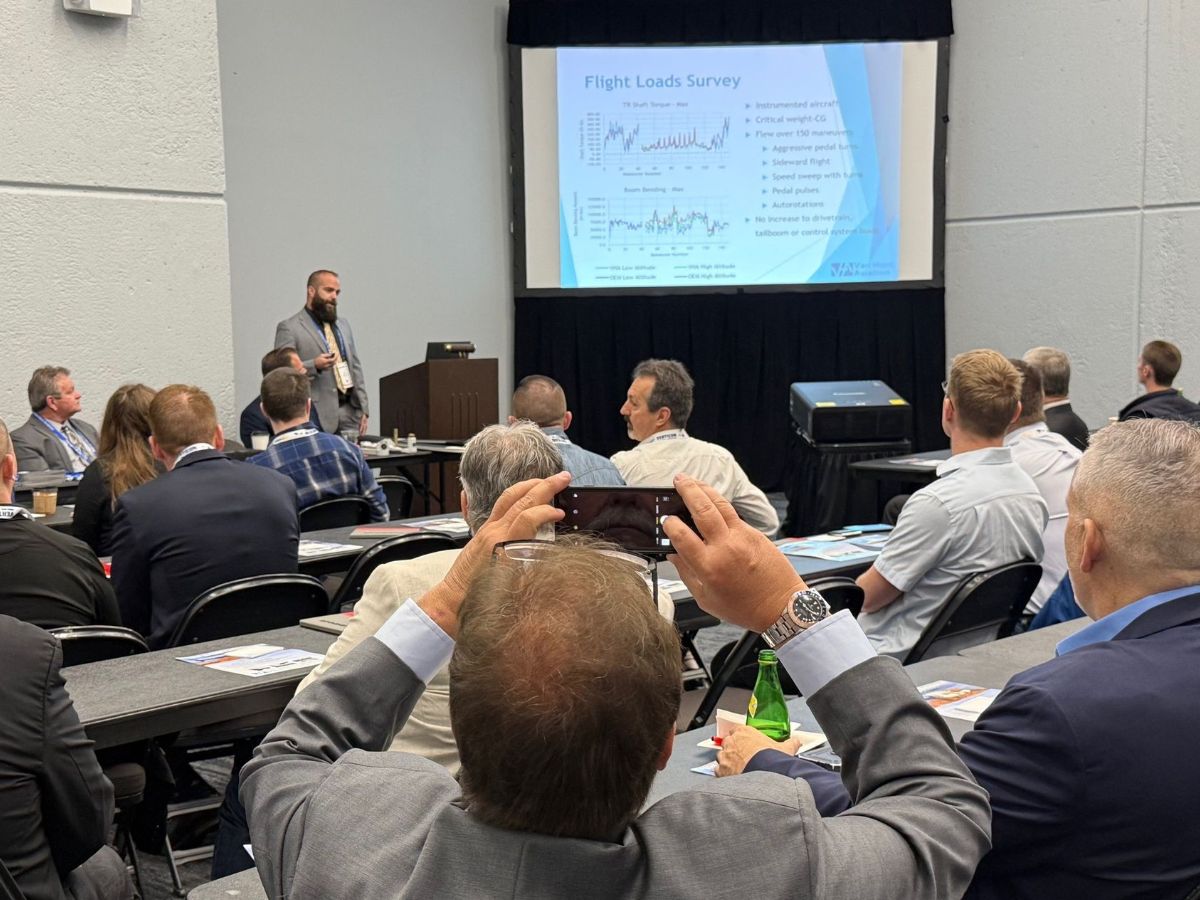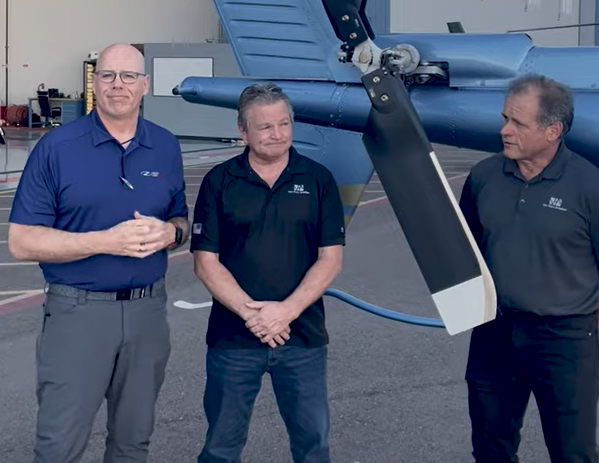During the second week of November 2018, VHA Engineering Manager Stephen Estes and contract pilot Marvin Hamilton returned the 206L4 that VHA had borrowed from San Juan Aviation for several years of flight testing. While the LongRanger’s final destination was Jack Northrop Field / Hawthorne Municipal Airport (KHHR), the VHA crew took a wide detour from Arizona to Los Angeles via Northern California to give several operators the opportunity to fly the newly certificated 206L main blades.
Below are some of Stephen’s notes on his “Tour de California” in LongRanger 317RL.
We departed Falcon Field (KFFZ) at 07:00 on Tuesday November 6. Our first stop was in Laughlin, NV (KIFP) at 08:45, averaging 110 knots of indicated airspeed at approximately 70% TOT. From there we crossed the Sierra Nevadas and headed to Porterville (KPTV). As we made it over the mountains at 10,000 feet PA, we had to lower our power setting so that we were not to exceed VNE. Our last leg that day was to Oroville (KOVE), another approximately two-hour leg. We fueled up and then headed to A&P Helicopters in nearby Richvale (07CL). Total distance flown for the journey was approximately 647 nm.
At A&P Helicopters we flew one of their pilots as well A&P president Vickie Compton and assistant to the director of maintenance Tanya Horton. With the five of us on board (Marvin and myself included), we flew for about 45 minutes. The pilot consistently commented on how smooth the ride was in all regimes: OGE (out of ground effect) hover, power line patrol, and VH (Maximum speed in level flight at maximum continuous power). His quote on power line patrol was that the ship “just seems to float along.”
The following morning, we made our way to Redding (KRDD) about 70 miles northwest, where we met with the director of maintenance (DOM) at Redding Air Services. Unfortunately, their pilots were not able to fly as they were relocating in response to wildfires. We also met with Dave Everson, owner and president at Air Shasta Rotor & Wing. Dave flew with us and explored the entire envelope with the ship. He demoed settling with power, steep banking turns, auto-rotations, and high altitude OGE hovers. He also was impressed with the smoothness of the ship and how smoothly it navigated out settling with power.
Next, we made it to PJ Helicopters at Red Bluff Municipal Airport (KRBL), about 22 nm south of Redding. There we had two demo flights. The first flight was for nearly an hour. The pilot had previously flown VHA 206B main rotor blades in agricultural (ag) operations and was interested in how the 206L blades performed. Upon landing, his impression was that these blades are substantially smoother. He commented with the 206B blades, they could not perform ag operations with winds greater than 10 knots, but on our 206L4 flight we were performing ag turns in 30 knot crosswinds.
From there we made it to Lodi (1O3) and met with Sacramento Executive. They also were unable to fly due to relocating for the fires, but purchased a set upon hearing feedback from the Redding DOM that morning.
The following day we made our way to Fresno and met with Rogers Helicopters Inc at Fresno Yosemite Airport (KFAT). We flew with the chief pilot. He commented again on the smoothness of the ship. He set the ship into settling with power twice—the second time in a very deep case—and was impressed with how easily the ship recovered. He also found that the ship made less blade slapping noises in the bumpy wind conditions of the ride than he was used to with metal blades. Upon landing, he kiddingly commented that he would have to go sabotage the metal blades on their existing ship to encourage the purchase of our composite blades.
Our final demo flight was with Sinton Helicopters in Paso Robles (KPRB). We flew two demo flights; during the second, the pilot pushed the ship while performing very extreme AG turns. This was my first time in a ship performing AG turns while sitting in the back and facing the back. I would not mind if I did not experience this again! Upon finishing their demo flights, the pilots’ comments were that the ship felt like a 206B with metal blades.
From there we made our way to Van Nuys (KVNY), just northwest of Los Angeles and approximately 137 miles to the southeast of Paso Robles. We had to dodge fires and support air craft along the way. The following day we delivered the ship to San Juan Aviation at KHHR. The entire journey spanned more than 1,200 miles with stops at 10 different airports. Eleven, if you count catching a commercial flight back to Phoenix from LAX.
Total Flight Time: 17.8 hours
Total 206Ls committed to be retrofitted with VHA main blades in 2018/2019 as result of the tour: 10
